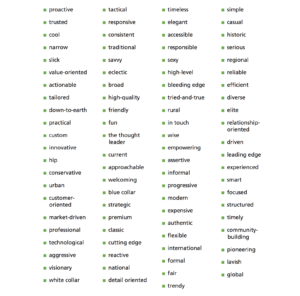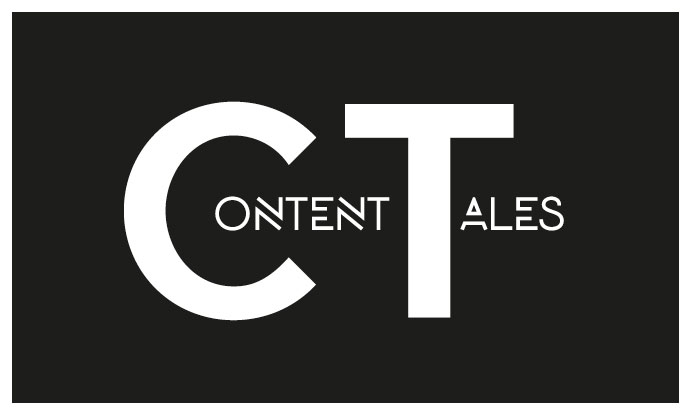READING TIME: 3 MINUTES
A well-elaborated message architecture is key for successful brand communications. It lays the foundation for visually and verbally consistent communication and a great user experience. In this article I’m going to provide you with an in-depth explanation about how to develop a message architecture with the help of cardsorting. It’s a step-by-step guide, which will empower you to get started right after reading it.
Note: This post is based on Margot Bloomstein’s book “Content Strategy at Work” as well as my own experiences when it comes to developing brand messages and corporate wording guidelines. As this article focuses on the actual creation of a message architecture, please have a look at my post about consistent communication, if you are interested in its benefits.
Generally said, a message architecture “is a hierarchy of communication goals that reflects a common vocabulary.” (Margot Bloomstein, SlideShare). It drives both, consistent verbal communication (sentence structure, voice & tone, nomenclature etc.) as well as consistent communication design and UX (photo angles, screen design, font styles etc.). To put it simply: A message architecture is a great tool to streamline your communication in regard to its style and goals.
Project kick-off
I’m really not a fan of doing kick-off meetings for every single project. But sometimes bringing together all the different stakeholders perfectly makes sense. During the kick-off you define project goals and discuss why and how they differ from the status quo. It’s important that everybody understands the sense of this project.
Workshop preparation
For the cardsorting exercise, it’s important to have a quite room with a large table. If you have the opportunity to leave the company building, do so. Add an agenda to the calendar invitation and ask the participants to prepare for the workshop. They should reflect and think about the brand’s nature, its beliefs, and which values define it at heart.
The facilitator of the workshop needs to prepare a deck of about 120 – 200 cards, labeled with adjectives that suit the brand’s industry. In addition to that another three cards with the following texts are necessary:
- Who we are
- Who we’d like to be
- Who we are not
Margot Bloomstein developed a universal card deck, which works for almost every industry. Nevertheless it makes sense to go for a quick check, if there aren’t any words that could potentially be distracting for the participants. See the words of Bloomstein’s deck below.

Cardsorting workshop – extract a message architecture
Categorize
Toss the prefiltered cards on the table and explain the team that they need to assign all cards to three different categories (who we are, who we’d like to be, who we are not). This exercise will take about 15 to 20 minutes and depends on the number of cards as well as the team’s ability to make decisions. It’s the facilitator’s job to get everybody involved and unleash passionate discussions. One person (mostly the facilitator) makes notes about the participant’s conversations and reactions. Later in this exercise, they might be useful when it comes to reconstructing certain decisions.
As soon as the majority of cards was assigned to one of the three categories, things get tough. Dig into the remaining terms and try to find out, in which category they suit best. It may happen that single terms are ringers – sort them out.
Filter
As soon as you finished categorizing terms, start with filtering. To do so, gather up the cards, which were assigned to the “who we are not” column and remove them from the table. It’s time now to concentrate on the cards, which were put into “who we are” and “who we’d like to be”. Ask the participants to move those cards from the “who we are” to the “who we’d like to be” column, which fit their future’s brand vision.
Prioritize
In step three of the cardsorting workshop, the facilitator removes the remaining cards from the category “who we are”. By doing so, he removes terms, which suit the brand’s current state, but are unwanted for the future.
The cards from the category “who we’d like to be” get now prioritized. In most cases the participants do not agree in this workshop step. It’s time to cluster the remaining terms to sub categories. There shouldn’t be more than three to six of those. Let the participants express their thoughts during the selection process and encourage them to sort out the remaining cards.
Summarize
After the final step, put the workshop results into an outline or a mind map. Point out that the outcome of this exercise is something with big impact: Now, every person involved has the same understanding of the brand’s communication goals. The message architecture is a great tool to spread this knowledge amongst other steakholders, because it provides a clear vocabulary, which perfectly fits the brand’s identity.
Have a look at this post from some of my colleagues. They cover the topic “message architectures” from a hands-on perspective and discuss it based on an example.
Do you have any questions on creating message architectures? Don’t hesitate to drop me comment. I’ll try to answer it immediately. If you have enjoyed this article, I’d appreciate, if you subscribe to my newsletter below.
Sources:
Margot Bloomstein: Content Strategy at Work
Title Photo by Igor Ovsyannykov on Unsplash




Be First to Comment